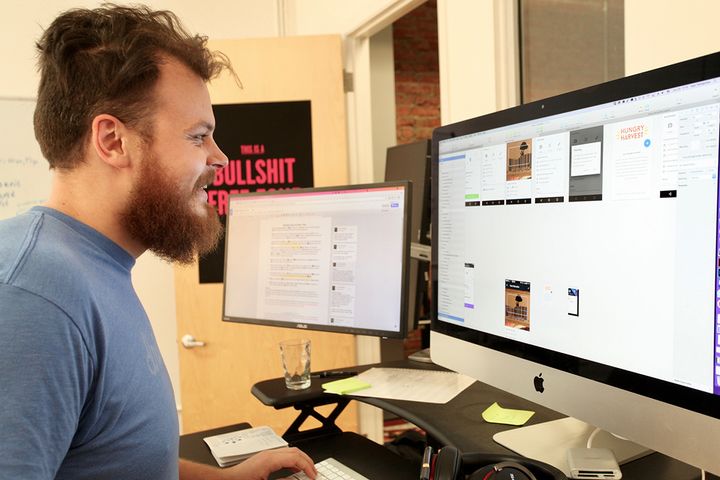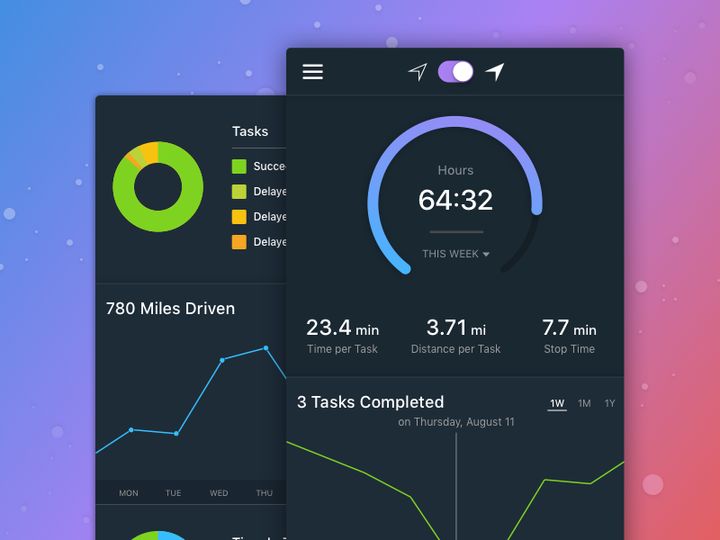
Ivan Tolmachev is a Senior Product Designer at Onfleet.
The way we work is changing. With rapidly developing technology and the Internet, people are not tied to physical location anymore. Combining work and travel allows people to explore the world while advancing in their career.
Today I am talking to Ivan Tolmachev, a Senior Product Designer at Onfleet, a logistics software company located in San Francisco. He’s managed product at Onfleet for the last two years, before then he was a product designer at Airbrake, later at Rackspace.
Read on to find out how living a nomadic life and traveling the world can make you a better product designer.
How did traveling shape your career as a designer?
I love traveling and I enjoyed the benefits of working remotely early in my career, so after graduating, I started a consultancy and continued working as a freelancer.
I think my work shaped my travels as much as traveling shaped my career. I’m very nomadic, my favorite author growing up was Hemingway, and I remember reading “A Moveable Feast,” dreaming about living a simple life in a foreign city, not as a tourist but like a local: staying in one city for extended periods of time, meeting people who grew up in the city and learning their culture.
I met my future wife in college, she was working as a freelance photographer at the time. Both able to work from anywhere in the world, as long as there’s internet connection, we wanted to take advantage of our situation. We lived and worked all across Europe: Cyprus, Barcelona, Berlin, London, you name it. Our friends thought we were just traveling non-stop, neglecting our careers, but not only did we support our travels, the majority of our days resembled your average work day while most of the touristy stuff was done on the weekends. We’d wake up in an apartment we’d rent for a couple of months on Airbnb, go to a coffee shop or a co-working space and work from there until five. In Barcelona, we’d go to a farmer’s market to buy some fresh seafood and cook paella at home for dinner; in London we’d go to pub to chat with locals.

I think traveling is the most liberating thing you can do as a creative person. Traveling always gives me a new perspective, teaches me empathy. We soaked up every city we lived in, their art, their history, their culture. I was no longer a Russian designer living abroad, but a combination of multiple design schools. Looking back, I can see the difference between the work I produced while living in Berlin as opposed to that in Cyprus. Living in a foreign city, you absorb the architecture, the things you see in national museums, the people and their routines – it all affects your way of thinking, your aesthetics and style.
Of course, there are challenges associated with working while travelling. I couldn’t work with most companies that reached out to me, since most of them wanted me in-house. I also didn’t have the benefit of working with other designers in the room, so I didn’t learn some of the things as early as I could’ve. You need to read a lot and interact with your colleagues online, on Twitter or elsewhere, to make up for it. But there are plenty of companies that thrive by having an all-remote team, tools like Slack help a lot too.
Working remotely works really well when everyone is responsible for their area of expertise and they are good at self-management. As a remote product designer, I was most successful when working with smaller stage companies and startups, with an emphasis on building.
What is product design?

Onfleet Driver Analytics.
To simplify, product design is how the product works. It’s a combination of what the product is intended to do, how your users interact with it and how the product makes them feel. Good product design means the product is easy to use, it helps your users achieve their goals seamlessly, which in return makes them use it more and helps you achieve your business goals. Lately I’ve been hearing about “entrepreneurial designers,” who are essentially product designers who understand what the business goals are and know how to design a product to achieve those. A strong product designer needs to always be an advocate for the users, while at the same time working with the sales team, helping them reach their quarterly goals.
What are the fundamentals of UX design every founder must know?
It’s all about knowing the user. Learn as much as possible about your users and the context they operate in. Their motivation, their environment, the reason they use your product. Talk to your users, watch them use your product, see where they struggle and think about how you can adjust the product so they don’t struggle anymore.
Apart from that, your UX design principles will vary, depending on what you’re building. In my work, designing digital B2B products, I try to stick to the following list:
- User should always be in charge of the product. Keep them informed of what’s happening in the product, if it’s outside their control, and keep their expectations aligned with what’s about to happen.
- User needs exactly the information and tools to accomplish their goal, no more and no less. If user can’t see something, to them it doesn’t exist. If you try to hide complexity to make things look more appealing, you’re just making your product harder to use.
- UI elements should be visually the same when they act the same and visually different when they act differently.
How can product designers improve their work?
Nothing beats talking to your customers. You can do support for a day or if you’re lucky enough to be in the same area as your users, invite them over and interview them. At Onfleet, a lot of our customers are businesses in the San Francisco area, so we are privileged to able to visit them and see how they use our product for real. If you can’t do that, there’s always an option to interview using any video chat app. Whatever you can do to understand your users and their needs better – do it.

There’s a misconception that for the data to be precise, one should interview hundreds of users and therefore a company needs a dedicated employee to conduct such research. In reality, the majority of your users experience similar problems, so interview a dozen and see what common issues you can find.
As for what to look at, my structure for these session is very simple: I take notes regarding the user herself, user’s environment, common activities while working with my product. I also ask basic introduction questions to get the conversation going, like “what is one thing you miss when using the product” or ask them to describe a pain point they’ve experienced recently. Most of the insights would come from watching them use your product and asking them to explain their reasoning while using it.
Why is product design crucial in today’s business?
Product design is a broad field and some of it is partially marketing. Good product design can help you achieve more traction when you launch, whereas bad product design can increase customer churn. Good product design will break complex ideas down into easy-to-understand user flows and will turn painfully difficult interactions into cleverly simple solutions. If you achieve that, it’s unlikely that your users will turn to your competitors to seek for a better solution.
Where is product design field heading in the near future?
I often hear that product design will soon become a commodity. With the rise of common design patterns libraries and design languages, like material design, it’s hard to argue with it. But that notion only really relates to traditional digital products, specifically web or mobile applications that we have learned to interact with on a day-to-day basis in the last decade.
As the technology moves forward, we will see new challenges, like designing for chatbots, voice assistants or virtual reality. When autonomous vehicles will become common, designing interactions for such vehicles will become another field of product design. We will develop new best practices and new solutions to problems we haven't even heard of yet.
